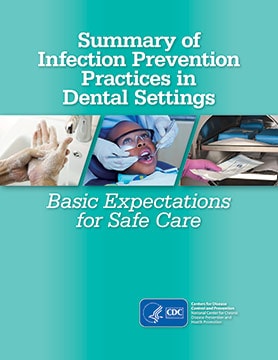Key points
- Routine maintenance and monitoring of dental unit water quality is an important part of dental infection prevention and control program.
- Dental providers should properly maintain and monitor their dental equipment to ensure that dental treatment water is safe for patient care.

About dental unit water quality
Dental unit waterlines (i.e., plastic tubing that carries water to the high-speed handpiece, air/water syringe, and ultrasonic scaler) promote bacterial growth and development of biofilm due to the presence of long narrow-bore tubing, inconsistent flow rates, and the potential for retraction of oral fluids. Dental health care personnel and patients could be placed at risk of adverse health effects if water is not appropriately treated.
All dental units should use systems that treat water to meet drinking water standards (i.e., ≤500 CFU/mL of heterotrophic water bacteria). Independent reservoirs—or water-bottle systems—alone are not sufficient. Commercial products and devices are available that can improve the quality of water used in dental treatment. Consult with the dental unit manufacturer for appropriate water maintenance methods and recommendations for monitoring dental water quality. During surgical procedures, use only sterile solutions as a coolant/irrigant using an appropriate delivery device, such as a sterile bulb syringe, sterile tubing that bypasses dental unit waterlines, or sterile single-use devices.
Guidance on dental unit water quality can be found in the Guidelines for Infection Control in Dental Health-Care Settings — 2003, and the Best Practices for Dental Unit Water Quality.
Key Recommendations for DENTAL UNIT WATER QUALITY in Dental Settings
- Use water that meets EPA regulatory standards for drinking water (i.e., ≤500 CFU/mL of heterotrophic water bacteria) for routine dental treatment output water.
- Consult with the dental unit manufacturer for appropriate methods and equipment to maintain the quality of dental water.
- Follow recommendations for monitoring water quality provided by the manufacturer of the unit or waterline treatment product.
- Use sterile saline or sterile water as a coolant/irrigant when performing surgical procedures.
